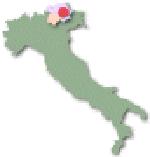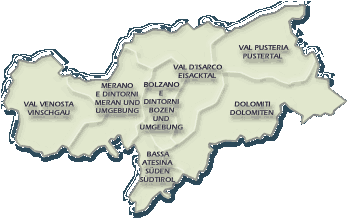
| Sociolingüística internacional |
| The linguistic situation
of South Tyrol, by Albert Branchadell and Joan Manrubia |
||||
| CONTINUA |
| 2. Overview of the political situation
Italy is divied into regions for administration purposes. These regions are territorial bodies with specific functions and duties. Five out of Italy’s twenty regions have a special statute. One of these such regions is that of Trentino-Alto Adige, which is different from the other four in that the duties of the region are very few and that the real autonomy lies with the provinces.
One of the peculiarities of South Tyrol is that, although the dominant party (the SVP) represents the German-speaking population, in the first half of the term in power, the president of the Assembly is a member of the German linguistic group and in the second half, of the Italian linguistic group. The Provincial Assembly also chooses the president and the two vice-presidents (one from each linguistic group) of the Provincial Government. The SVP was founded on 8th May 1945 and was soon recognised by the Allies as the political representative of the German-speaking population of South Tyrol. Initially, it was in favour of the re-incorporation of South Tyrol into Austria, but it gradually came to accept the autonomous regime that developed from the Degasperi-Gruber Agreement. Since 1948 – when the first elections were held for the Provincial Assembly of South Tyrol – it has always won the elections by absolute majority, and was the most voted party in both Italian and European elections. Following the last provincial elections, held in 1998, the SVP formed a coalition government with three Italian parties (Popolari-Alto Adige Domani, Progetto Centrosinistra and Il Centro-UDA). Number of seats allocated to each linguistic group
The term aggregated refers to citizens who state "other" since they must be counted as members of one of the three existing groups if they are to benefit from rights related to linguistic belonging, and to determine the relative proportion of groups. It is important to remember that, since 1981, the census has been used to work out the two basic presuppositions of the ethnic proportion system, introduced by the Statute of Autonomy in 1972: a) to find out the relative composition of linguistic groups in order to determine the number of employment positions that correspond to each and b) to find out the linguistic group to which each and every citizen belongs. |

